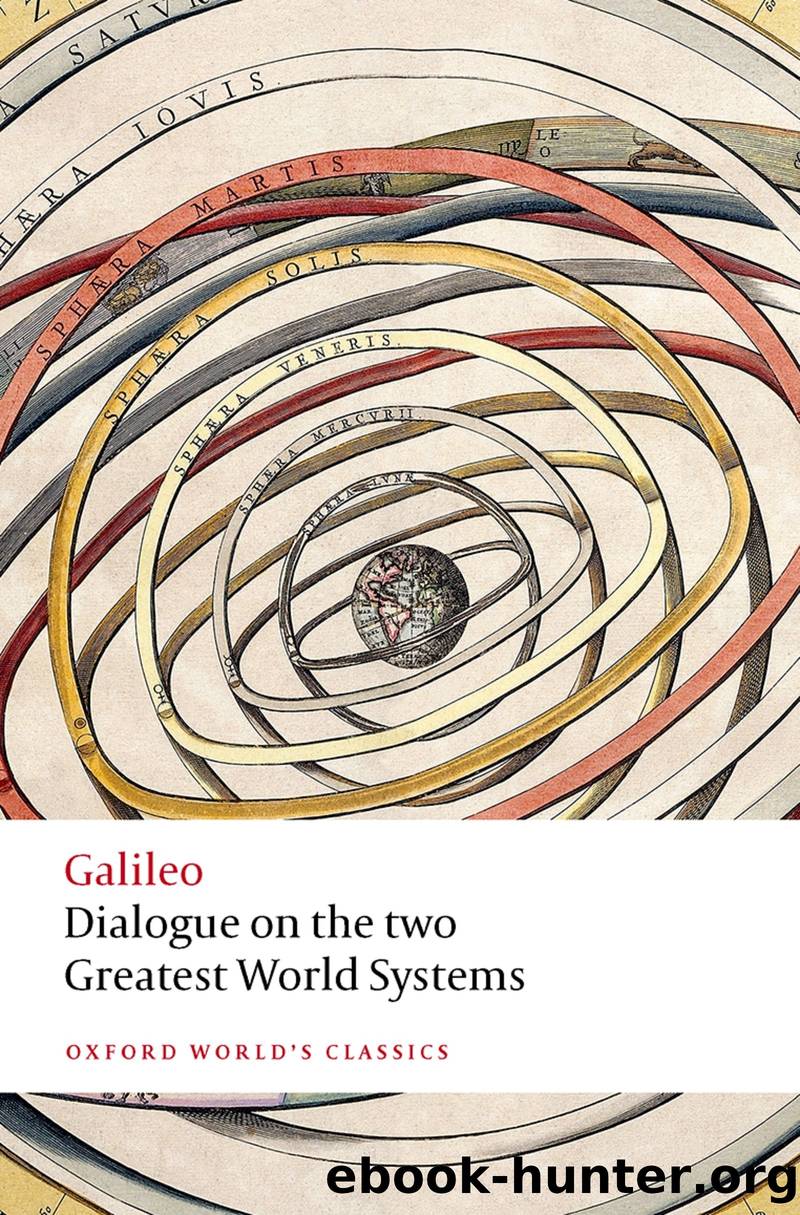Dialogue on the Two Greatest World Systems by Galileo & Mark Davie & William R. Shea

Author:Galileo & Mark Davie & William R. Shea [Galileo & Davie, Mark & Shea, William R.]
Language: eng
Format: epub
ISBN: 9780192576453
Publisher: OUP Oxford
Published: 2022-07-13T00:00:00+00:00
[256]Now let us complete the parallelogram AMBC, and extend to its side BM not just the parallel lines we have marked in the triangle, but the infinite number of lines we have imagined drawn from every point on the side AC. We saw that BC was the longest of the infinite number of lines in the triangle, and that it represented the maximum degree of velocity gained by the object in accelerated motion; and also that the whole surface of the triangle represented the sum total of all the velocity with which it travelled a given distance in the time interval AC. So now the parallelogram represents the sum total of an equal number of degrees of velocity, but each one now equal to the maximum value BC; and this total velocity is twice the sum of the increasing velocities in the triangle, since the parallelogram is twice the size of the triangle. So if the falling object, passing through the degrees of accelerated motion represented by the triangle ABC, has travelled a certain distance in a given interval of time, it is reasonable and probable to conclude that if it passes through the uniform velocity represented by the parallelogram, it will travel twice the distance in constant motion as it travelled in accelerated motion.
sagredo. I am entirely satisfied. If this is what you call a probable argument, what will your necessary demonstrations be like? If only there were just one such conclusive proof in the whole of common philosophy!
Mathematical certainty is not to be sought in the natural sciences.
simplicio. We should not look for perfect mathematical certainty in the natural sciences.
sagredo. Surely motion is a topic in natural science, but I donât recall Aristotle demonstrating even the smallest detail about it. But letâs not embark on any further digressions; and Salviati, please keep your promise to explain the reason why the motion of a pendulum ceases, apart from the resistance of the air to being parted.
A longer pendulum oscillates more infrequently than one which is shorter.
salviati. Tell me: of two pendulums of different lengths, doesnât the one whose cord is longer oscillate more infrequently?
sagredo. Yes, assuming they move an equal distance from the perpendicular.
The oscillations of a pendulum always have the same frequency, regardless of whether their amplitude is large or small.
salviati. The distance from the perpendicular doesnât make any difference, because the same pendulum will always complete its oscillations in the same time interval, however long or short they are, in other words however much or little it is moved away from the perpendicular. The time intervals may not be exactly the same, but experience will show that the differences are imperceptible, and even if they were substantial this would help rather than hinder our argument. Let us draw a perpendicular [257]AB, with a cord AC fixed at point A, to which we attach a weight, C, and another higher up on the same cord, E: If we draw the cord AC away from the perpendicular and let it go, the weights C and E will move through the arcs CBD and EGF.
Download
This site does not store any files on its server. We only index and link to content provided by other sites. Please contact the content providers to delete copyright contents if any and email us, we'll remove relevant links or contents immediately.
Vicious, Elegant Bastards by Hyams Jacky;(183)
A Preface to Politics by Walter Lippmann(123)
Tales from Two Cities by Dervla Murphy(111)
On the Burning of Books by Kenneth Baker(111)
Empires of Panic by Robert Peckham(109)
Simple Living in History by Various Authors Samuel Alexander Amanda McLeod(79)
Mobility and Biography by Sarah Panter(74)
The Oxford Illustrated History of Science by Iwan Rhys Morus(73)
Stories from the Serat Centhini by Santoso Soewito;Pringgoharjono Kestity;(73)
Social Orders and Social Classes in Europe Since 1500 by M. L. Bush(71)
Convict Orphans by Lucy Frost(66)
Tunes on a Penny Whistle: A Derbyshire Childhood by Doris E Coates(64)
Louisiana's Sacred Places by Deborah Burst(51)
Peasants Making History: Living In an English Region 1200-1540 by Christopher Dyer(26)
Volatilization of oxides during oxidation of some superalloys at 1200°C by Unknown(26)
